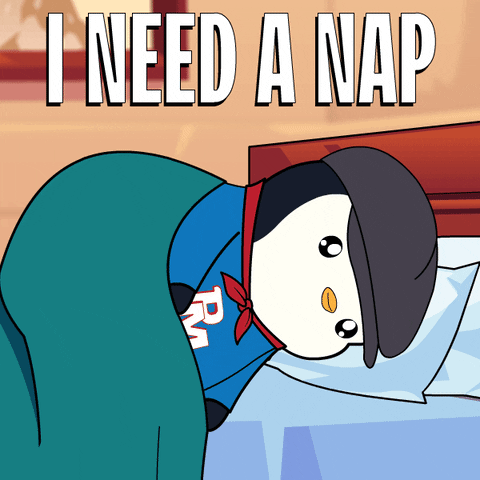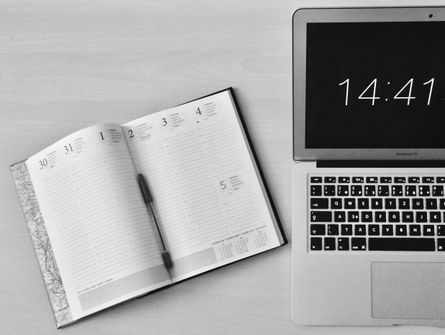
How Women with ADHD Can Manage Relationships: Effective Communication and Conflict Resolution
For women with ADHD, navigating relationships—whether romantic or platonic—can present unique challenges. ADHD symptoms like distraction, impulsivity,...

We all know the feeling: it’s mid-afternoon, and you hit that wall where no amount of coffee can help. A nap seems like the perfect solution, but napping can be tricky. Done right, a nap can leave you feeling refreshed and ready to conquer the day; done wrong, and you might feel even worse than before. The secret? Napping smart!
Here’s a fun and easy guide to help you master the art of the nap, designed especially for busy women!

Napping isn’t just for toddlers and lazy Sundays. For women juggling work, family, and personal life, a well-timed nap can make all the difference.
Why Nap? A good nap can:
Fun Fact: A 20-minute nap can improve alertness, mood, and performance without leaving you groggy. It’s like a mini brain reboot!
Before you curl up on the couch, it’s important to understand how to nap the right way. There’s a sweet spot when it comes to napping that ensures you wake up feeling fresh and energized instead of groggy and confused.
You’ve probably heard that a “power nap” is ideal, and it’s true! 20-30 minutes is the magic number. Why? That’s just enough time to recharge your brain without slipping into a deep sleep, which can leave you feeling like you woke up on another planet.
Pro Tip: If you need a little more time, try a 90-minute nap, which allows you to go through one full sleep cycle. You’ll wake up naturally at the right time, avoiding that groggy, disoriented feeling.
Your body has a natural dip in energy between 1 p.m. and 3 p.m., making this the perfect time to take a nap. Napping during this window aligns with your body’s circadian rhythm, which naturally makes you feel sleepy during these hours. Nap too late in the day, and you’ll mess with your nighttime sleep, turning your nap into a sneaky sleep thief.
Example: If you’ve just had lunch and feel a little sleepy, take a quick 20-minute nap around 1:30 p.m. to avoid the afternoon crash. You’ll feel recharged without it interfering with bedtime.

Okay, so napping can be great, but it’s not all sunshine and sweet dreams if done wrong. Here’s what happens when napping goes off the rails:
Ever woken up from a nap feeling groggy and even more tired than before? That’s called sleep inertia, and it happens when you nap for too long. When your nap goes past 30 minutes, you enter deep sleep (slow-wave sleep). Waking up during this phase is like hitting the brakes too hard on your way down a hill—you’re left feeling out of it for a while.
Pro Tip: Keep your naps under 30 minutes, or stretch it to a full 90 minutes if you can, so your body completes a sleep cycle and wakes up naturally.
Taking a nap after 3 p.m. is asking for trouble. While it may give you an energy boost for the short term, it can mess with your circadian rhythm, making it harder to fall asleep at night. This could lead to a frustrating cycle of poor nighttime sleep and daytime fatigue.
Quick Tip: Avoid naps after 3 p.m. unless you want to be tossing and turning at bedtime!
If you’re finding yourself napping every day—or more than once a day—it might be a sign of a bigger issue. Napping too often can signal sleep problems at night, like insomnia or sleep apnea. Instead of relying on multiple naps, focus on improving your nighttime sleep quality.
Solution: If you’re feeling the need to nap constantly, it might be time to look at your sleep hygiene and make sure you’re getting the rest you need at night.
Let’s not forget why napping is awesome. Here’s how a well-timed nap can work wonders:
Did You Know? A NASA study found that pilots who took a 40-minute nap improved their performance by 34% and their alertness by a whopping 100%!

Reality: Napping is actually a productivity booster. It helps recharge your mind and body, so you can tackle your tasks with more energy and focus.
Reality: As long as you stick to a 20-30 minute nap and avoid late-afternoon snoozes, your nap won’t interfere with your night’s sleep. In fact, it can make you more relaxed and ready for bed!
Reality: Adults need naps too! In fact, 85% of mammals, including humans, are polyphasic sleepers, meaning they naturally sleep for shorter periods throughout the day.
A: The ideal nap length is 20-30 minutes. This short nap helps you recharge without falling into a deeper sleep cycle that can cause grogginess. If you have more time, a 90-minute nap allows you to complete a full sleep cycle, leaving you feeling refreshed.
A: The best time to nap is during the early afternoon, typically between 1 p.m. and 3 p.m. This aligns with your body’s natural circadian rhythm, making it easier to fall asleep and avoid disrupting your nighttime rest.
A: Yes, napping too late (after 3 p.m.) can interfere with your ability to fall asleep at night. Stick to earlier naps to avoid disrupting your sleep schedule.
A: Grogginess after a nap, known as sleep inertia, typically happens when you nap for more than 30 minutes and wake up during a deeper sleep stage. To avoid this, keep naps short or opt for a full 90-minute nap to complete a sleep cycle.
A: While occasional naps are beneficial, frequent napping may indicate poor sleep quality at night. If you rely on daily naps, consider evaluating your nighttime sleep habits to ensure you’re getting adequate rest.
This article is for informational purposes only and should not be taken as medical advice. Always consult a healthcare professional before making changes to your sleep routine or addressing persistent fatigue. Napping habits and sleep needs can vary by individual, and what works for one person may not work for another.
Napping is one of life’s simplest (and most effective) ways to recharge. By keeping naps short, timed well, and done in the right environment, you can use them to improve your energy, mood, and productivity. Remember to nap early in the afternoon and aim for that 20-30 minute sweet spot for the ultimate brain boost.
Now that you’re armed with the science of smart napping, go ahead—schedule that nap guilt-free! You’ll wake up ready to take on whatever the day throws your way.

For women with ADHD, navigating relationships—whether romantic or platonic—can present unique challenges. ADHD symptoms like distraction, impulsivity,...

Managing time can be a challenge for anyone, but for women with ADHD, time management often feels like an insurmountable task. ADHD can make it diffic...

Relationships—whether romantic, familial, or friendships—are central to our emotional well-being. But navigating these relationships can sometimes fee...

For many women, trauma is a deeply personal experience that can impact emotional well-being, relationships, and overall quality of life. From childhoo...

Career-related stress is something most women face at some point in their professional lives. The balancing act between personal and professional resp...